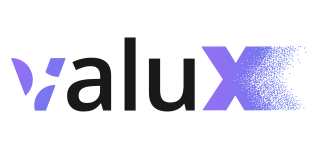The hedge fund industry has long been a breeding ground for cutting-edge financial strategies, from quantitative analysis to high-frequency trading (HFT). As blockchain technology continues to evolve, the traditional world of hedge funds is beginning to converge with decentralized finance (DeFi), where real-world assets (RWAs) are being tokenized and brought on-chain. This intersection of blockchain technology and sophisticated investment strategies could create a new frontier for capital markets — one where on-chain hedge funds leverage transparent, low-cost, and highly liquid systems to implement novel trading strategies.
In this blog, we’ll explore how quantitative strategies, hedge fund principles, and trading frequency metrics can be applied to RWA markets. We’ll also examine the future potential of on-chain hedge funds and how these markets will evolve as liquidity and throughput increase on decentralized platforms.
Quantitative Strategies in Liquid Markets: Applying Mathematical Models
Quantitative strategies, often referred to as “quants,” rely on mathematical models and algorithms to identify investment opportunities in markets. These strategies typically focus on analyzing large datasets, spotting patterns, and executing trades with precision. While they have traditionally been applied to highly liquid markets like equities, futures, and foreign exchange (FX), these strategies are now being adapted for crypto and tokenized markets.
Quant strategies are usually broken down into various categories, such as:
- Statistical Arbitrage: A strategy that involves using statistical models to identify price inefficiencies between correlated assets and exploiting those discrepancies through rapid trades.
- Momentum Trading: This approach identifies and follows price trends, assuming that an asset’s price movement in one direction will continue for a period.
- Mean Reversion: Based on the assumption that prices will revert to their historical averages, mean reversion strategies capitalize on assets that deviate significantly from their average price.
- Pair Trading: A market-neutral strategy where traders simultaneously buy and sell two highly correlated assets to hedge risk and capture profit based on temporary price divergences.
In traditional markets, these strategies are heavily reliant on data availability, liquidity, and transaction costs. Moving these quantitative strategies on-chain, particularly in RWA markets, offers new opportunities for capital markets. The transparency, low transaction costs, and speed of blockchain could enable quants to implement strategies more efficiently. For example, a statistical arbitrage strategy could be applied to tokenized commodities or real estate assets, where blockchain’s transparency allows traders to track supply and demand patterns with greater precision.
Hedge Fund Strategies: Long/Short, Market Neutral, and Event-Driven in Tokenized Markets
Hedge funds use a variety of strategies to generate returns regardless of market direction. Some of the most popular strategies include long/short equity, market-neutral, and event-driven approaches. Let’s explore how these strategies could evolve in tokenized RWA markets.
Long/Short Strategies:
A long/short strategy involves taking long positions in assets expected to increase in value and short positions in assets expected to decrease. In traditional hedge funds, this is commonly applied to stocks and equities. On-chain, this strategy could be applied to RWAs like tokenized bonds, real estate, or commodities.
For example, in a tokenized real estate market, a hedge fund could take a long position on tokenized properties in growing urban areas, while shorting tokenized assets in sectors expected to decline. The high transparency of on-chain data provides greater insight into underlying factors such as rental yields, geographic trends, and property development rates, enabling more informed decision-making.
Market-Neutral Strategies:
Market-neutral strategies aim to eliminate market risk by maintaining equal long and short positions. In the context of tokenized RWAs, hedge funds could execute market-neutral trades by going long on undervalued tokenized corporate bonds while shorting tokenized government bonds. Since these assets are relatively less volatile compared to cryptocurrencies, the fund can aim for consistent returns through arbitrage opportunities without being overly exposed to market movements.
Event-Driven Strategies:
Event-driven strategies capitalize on market events such as mergers, acquisitions, or earnings announcements. With tokenized RWAs, hedge funds can use event-driven strategies tied to real-world occurrences, such as changes in government regulations, interest rate announcements, or real estate developments. For example, a hedge fund could take a position on tokenized infrastructure projects, anticipating price shifts based on new government contracts or legal changes that impact the underlying assets.
Low-, Medium-, and High-Frequency Trading Strategies in On-Chain Markets
One of the most transformative aspects of bringing hedge fund strategies on-chain is the ability to employ low-, medium-, and high-frequency trading strategies with increased efficiency and lower barriers to entry. Let’s break these down:
Low-Frequency Trading (LFT):
LFT strategies are often focused on long-term asset allocation, where investors hold positions for extended periods. In tokenized RWA markets, family offices, institutional investors, or hedge funds could implement LFT strategies by holding positions in tokenized real estate, bonds, or private equity. The advantage of tokenization lies in the ability to fractionalize assets, enabling even low-frequency traders to diversify their portfolios and maintain liquidity through secondary markets.
Medium-Frequency Trading (MFT):
Medium-frequency strategies involve holding positions for weeks or months and are typically driven by macroeconomic factors or sector-specific trends. For example, a medium-frequency trader might allocate capital across tokenized corporate bonds, adjusting positions based on quarterly earnings or interest rate changes. The transparency of on-chain data allows for real-time monitoring of market events and corporate announcements, which helps in adjusting medium-frequency strategies efficiently.
High-Frequency Trading (HFT):
HFT strategies are characterized by rapid trades made within milliseconds, taking advantage of small price discrepancies. In the world of RWAs, HFT strategies could be applied to highly liquid tokenized markets like commodities or debt instruments, where there is consistent price movement due to market activity. Blockchain’s low transaction fees, high throughput, and transparent order books offer a perfect environment for HFT, where arbitrage opportunities can be swiftly exploited.
As tokenized markets for RWAs grow in liquidity and depth, HFT strategies will likely become more prevalent. The low transaction costs on blockchain networks, combined with high throughput, will allow hedge funds to implement HFT strategies profitably, capturing small, rapid price changes across multiple asset classes.
Metrics for Analyzing On-Chain RWA Markets
When applying quantitative or hedge fund strategies to RWA markets, several key metrics come into play:
- Volatility: Understanding the volatility of tokenized RWAs is essential for high-frequency and arbitrage strategies. RWAs like real estate or bonds may offer lower volatility compared to cryptocurrencies, but they still present opportunities for strategies like mean reversion or momentum trading.
- Liquidity: Liquidity is critical for executing high-frequency or market-neutral strategies. In traditional markets, liquidity is often constrained by market makers or intermediaries, but on-chain RWA markets are highly transparent. Liquidity pools and decentralized exchanges provide near-instant access to liquidity, lowering the barrier for entry into sophisticated trading strategies.
- Correlation: Correlation between different asset classes is a key component of diversification strategies. Tokenized RWAs will likely have a low correlation with volatile crypto assets, making them a valuable hedge within an on-chain portfolio. Traders can use correlation metrics to balance long and short positions across RWAs and other tokenized assets to minimize risk.
- Order Book Transparency: Blockchain’s inherent transparency offers a clear view of the order book at any given time. This visibility helps hedge funds track market depth, liquidity, and momentum, enabling faster and more informed trading decisions.
The Rise of the On-Chain Hedge Fund
The concept of an on-chain hedge fund is no longer speculative — it’s becoming a reality. With the integration of RWAs into decentralized markets, hedge funds can build portfolios that combine traditional asset classes like real estate, bonds, and commodities with innovative crypto-native assets like yield-bearing tokens, stablecoins, and decentralized finance products.
The on-chain hedge fund has several advantages over its traditional counterparts:
- Lower Costs: Transaction costs on blockchain networks are significantly lower than those in traditional markets. This allows hedge funds to execute high-frequency trades or complex arbitrage strategies without being burdened by excessive fees.
- High Throughput: As Layer 2 scaling solutions and faster blockchains become more prevalent, the high throughput offered by these networks will enable hedge funds to deploy strategies that require quick order execution and settlement.
- Transparency: The transparency of blockchain networks allows hedge funds to monitor the flow of assets and capital in real time, providing unprecedented insight into market conditions. This transparency enhances risk management and enables more accurate decision-making.
- Accessibility: On-chain markets offer broader access to previously illiquid assets. Hedge funds can trade fractionalized RWAs like real estate or private equity with greater ease, opening up new opportunities for diversification and risk management.
Conclusion: The Future of Capital Markets on Blockchain
The future of capital markets lies in the convergence of quantitative strategies, hedge fund principles, and blockchain technology. With tokenized RWAs now on-chain, hedge funds can deploy sophisticated trading strategies in a transparent, low-cost environment that was previously impossible in traditional markets. The combination of low-frequency, medium-frequency, and high-frequency trading strategies with blockchain’s advantages presents a unique opportunity to build a new kind of hedge fund — one that is more agile, transparent, and accessible.
As liquidity in tokenized RWA markets grows, the potential for applying complex quantitative models will only increase, opening the door to a new era of decentralized finance. Hedge funds that embrace these technologies will be at the forefront of this.
At Valuit, we are redefining the way financial markets operate by bridging the gap between traditional finance and decentralized ecosystems. Our platform empowers businesses and investors to unlock the potential of tokenized real-world assets (RWAs) and innovative trading strategies. Whether you’re looking to optimize your treasury, explore on-chain hedge fund opportunities, or diversify your portfolio, Valuit offers cutting-edge solutions tailored to your needs. Join us as we lead the charge in transforming capital markets for a transparent, efficient, and decentralized future.








